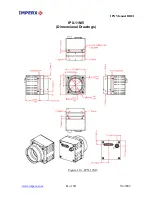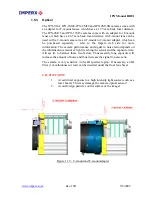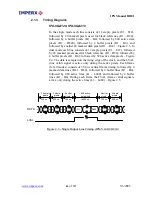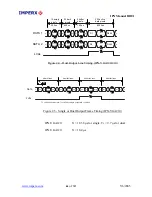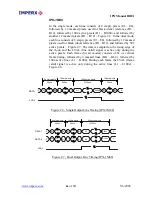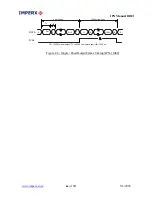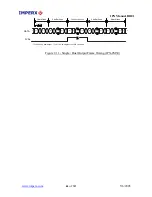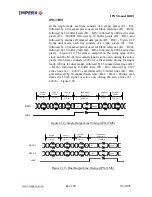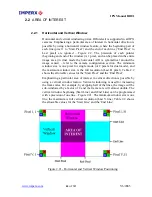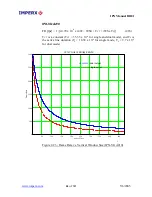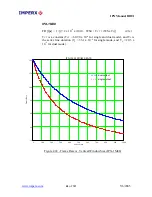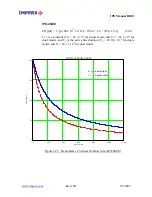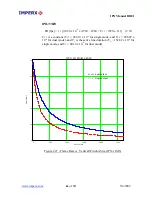
IPX Manual RB01
IPX-2M30
In the single mode, each line consists of 4 empty pixels (E1 – E4),
followed by 16 masked pixels used for black (dark) reference (R1 –
R16), followed by 4 buffer pixels (B1 – B4), followed by 1600 active
data pixels (D1 – D1600), followed by 4 buffer pixels (B1 – B4), and
followed by another 16 masked dark pixels (R1 – R16) – Figure 2.9. In
the dual mode, each line consists of 4 empty pixels (E1 – E4),
followed by 16 masked pixels used for black (dark) reference (R1 –
R16), followed by 4 buffer pixels (B1 – B4), followed by 800 active
data pixels – Figure 2.10. The data is sampled on the rising edge of the
clock, and the LVAL (line valid) signal is active only during the active
pixels. Each frame consists of 82 us vertical frame timing for single
mode (62 us for dual mode) followed by 2 masked dark lines RL1,
RL2, followed by 4 buffer lines (B1 – B4), followed by 1200 active
lines (L1 – L1200), followed by 4 buffer lines (B1 – B4), and followed
by another 4 masked dark lines (R1 – R4). During each frame the
FVAL (frame valid) signal is active only during the active lines (L1 –
L1200) – Figure 2.11.
DATA
LVAL
4 empty
pixels
16 dark
pixels
1600 active
data pixels
100 ns
400 ns
40000 ns
4 buffer
pixels
100 ns
4 buffer
pixels
100 ns
16 dark
pixels
400 ns
- 0 -
E1
E4
R1
R16
B1
B4
D1
D1600
B1
B4
R1
R16
- 0 -
Figure 2.9 - Single output line timing (IPX-2M30)
DATA
LVAL
4 empty
pixels
16 dark
pixels
1600 active
data pixels
100 ns
400 ns
40000 ns
4
p
buffer
ixels
100 ns
4 buffer
pixels
100 ns
16 dark
pixels
400 ns
- 0 -
E1
E4
R1
R16
B1
B4
D1
D1600
B1
B4
R1
R16
- 0 -
Figure 2.10 - Dual output line timing (IPX-2M30)
www.imperx.com
47
of
137
5/6/2005

